Tanabata Celebrations &
Onigiri Making

Tanabata Celebrations &
Onigiri Making
One of the key focuses in learning an additional language, and a reason why we offer languages at TLSC, is to develop students' sense of being a part of a larger global community and foster their intercultural communication skills. During the last week of Term 2, students in the Japanese language program learned about a festival that was to take place while they were on their end of semester break. The festival, known as Tanabata or the Star Festival, takes place typically on July 7, that is, the 7th day of the 7th month. Not wanting them to miss out on experiencing the essence of the festival, students in Years 7, 8 and 9 were able to write tanzaku, which are wishes that they hope to come to fruition. Japanese traditions state that the wishes are written on paper and then hung on bamboo branches. The bamboo branches are decorated with other paper decorations that symbolise good health and good fortune.
Students wrote their tanzaku wishes in Japanese and then hung their wishes up in their classrooms. Our Year 7 LEAP students even made the most beautiful wall display and decorated it with origami stars. Our Year 9 students were able to get even more traditional and hang their tanzaku on a bamboo plant in their classroom. Students really enjoyed the experience of trying origami, learning about Japanese folklore and customs, and showcasing their writing skills.
Tanabata is a Japanese festival celebrated on the 7th of July. Tanabata is a celebration to commemorate the story of two lovers that are only allowed to meet once a year. To learn about this festival, both 7I and H created a classroom display with different kinds of Tanabata origami decorations. The students also created wishes in Japanese on different coloured paper called Tanzaku and stuck them on the paper bamboo decoration.
Osanne 7I

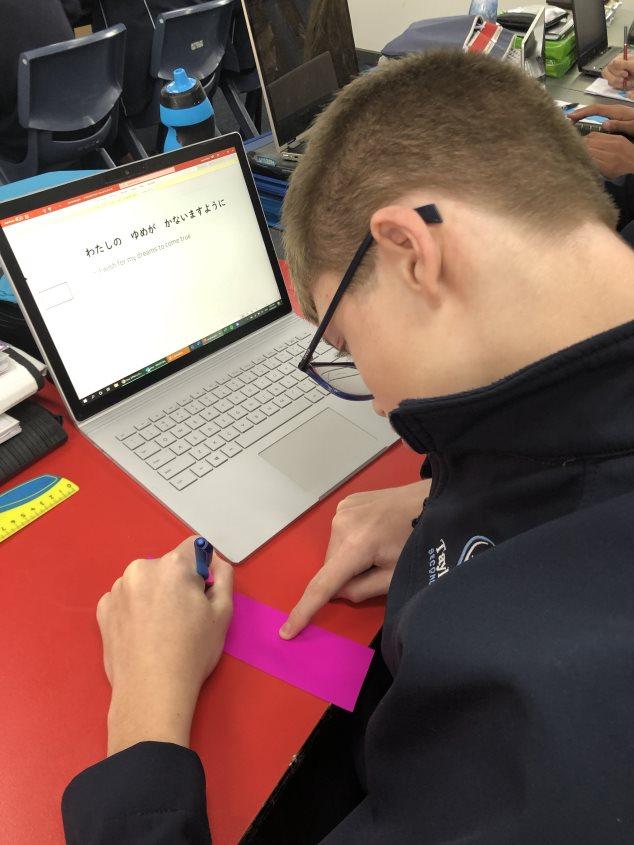
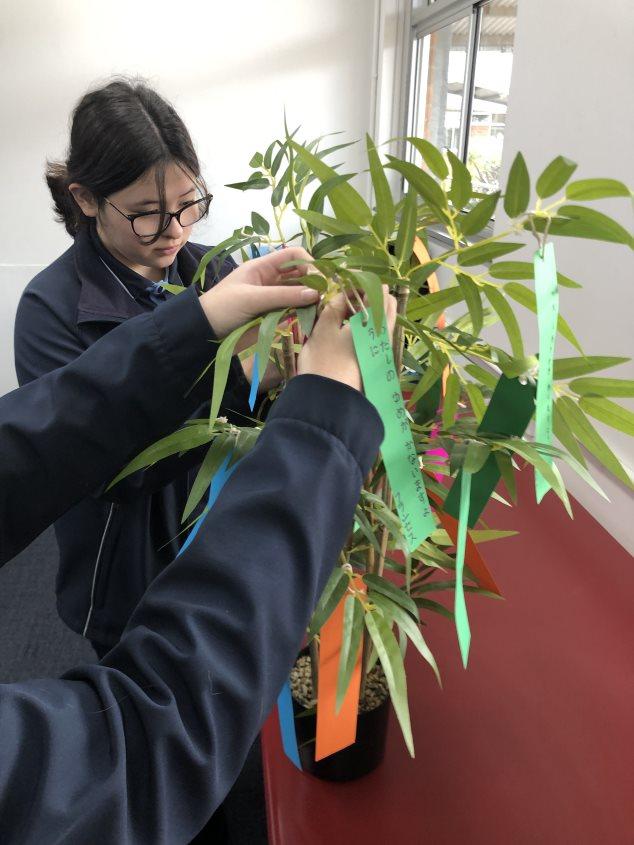
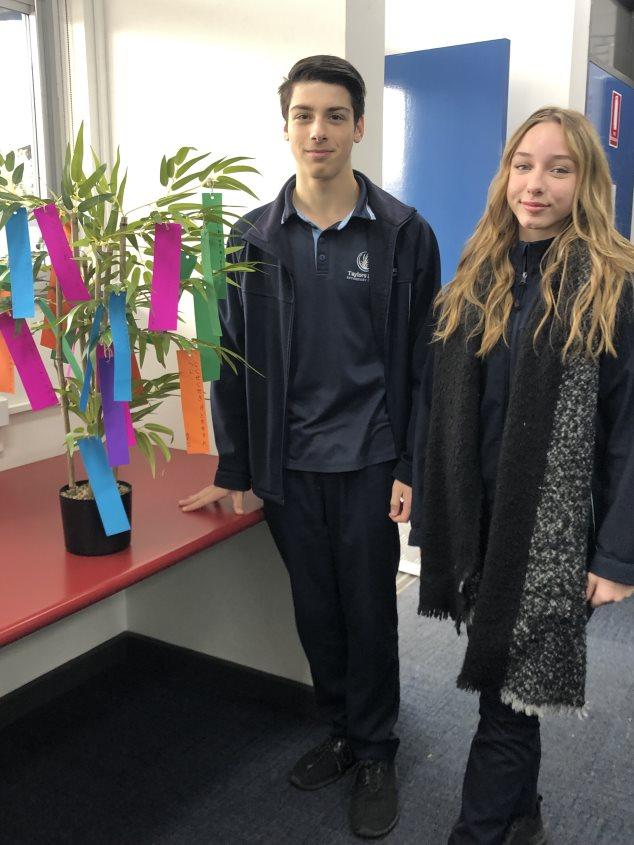

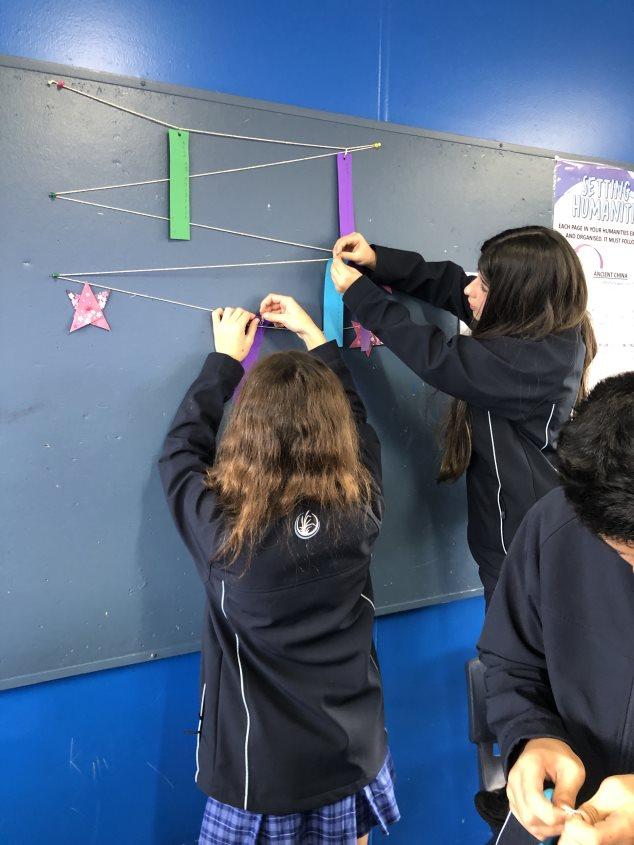
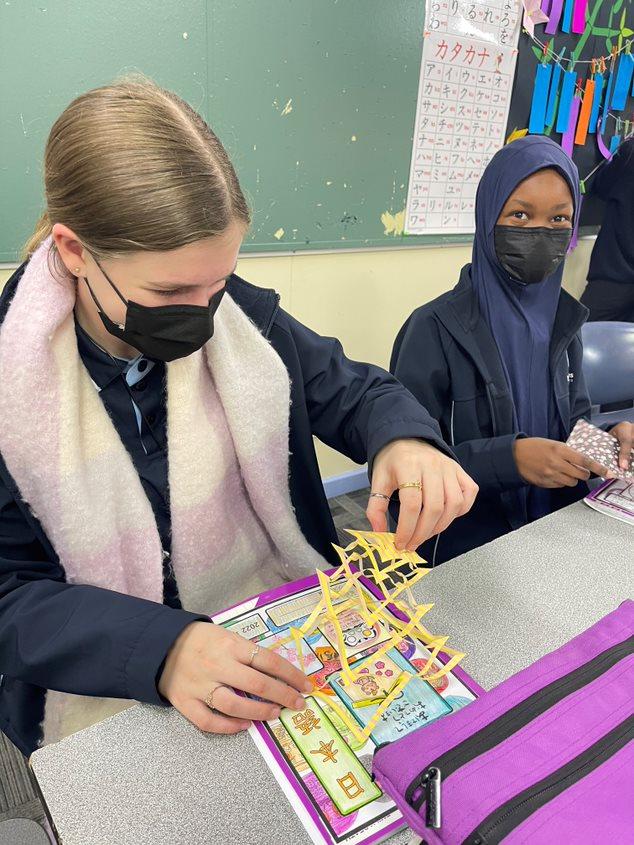







In line with the current unit of study for Year 9 Japanese, students in Year 9 experienced making their own onigiri in class. Students had already watch clips about vending machines and the different kinds of items found in Japanese vending machines. We had also compared the range of fresh and prepared foods available at Japanese convenience stores to the foods on offer in Australia. One such food that we discovered was readily available in Japan was onigiri, a rice ball wrapped in toasted seaweed. Students were keen to make their own rice balls and so with a bit of preparation before school, Mrs Shin made it happen! We watched a short clip on the origin of onigiri - did you know they were invented for samurai to quickly eat on the go before going into battle?! - and then students watched the shaping technique closely before creating their own onigiri. With simple ingredients like short-grain rice, salt and nori, students were soon showing off their perfectly shaped onigiri. Some students chose to include traditional sprinkle seasoning or tuna-mayo filling. Many smiles later it was a fulfilling way to experience some authentic Japanese "fast" food - all done in a single period! Thank you for your assistance in class, Ms Thomas. Well done Year 9s for your efficiency and enthusiasm. Itadakimasu!
Learning to make my first onigiri was really fun and engaging! I was able to explore the many variations of this traditional Japanese comfort food whilst creating my own. This lesson truly developed my interest in this subject even more.
Frances 9J

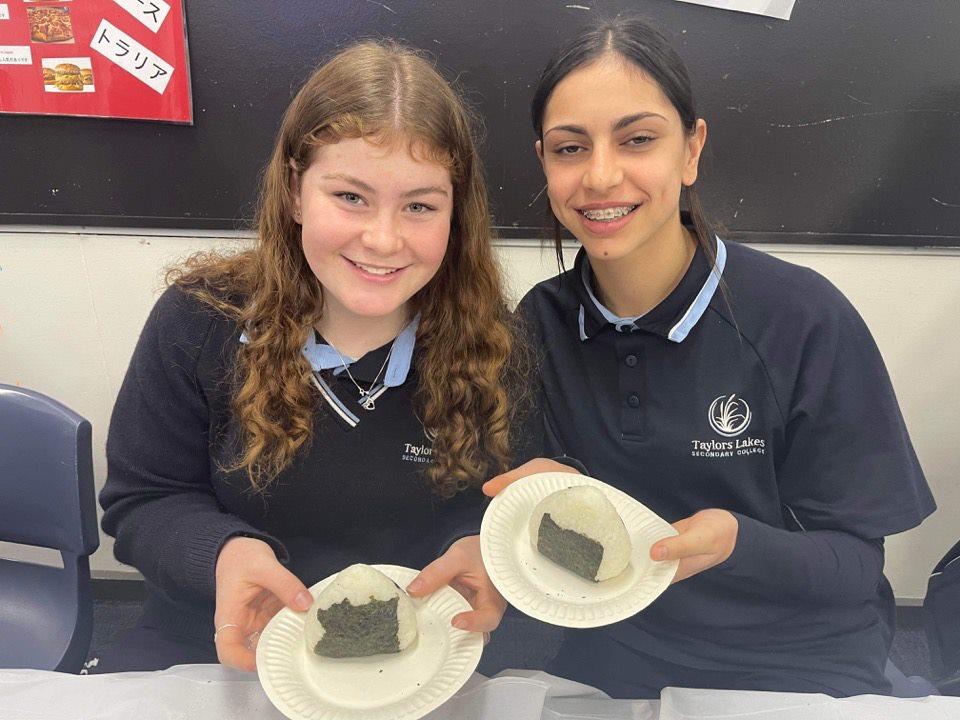
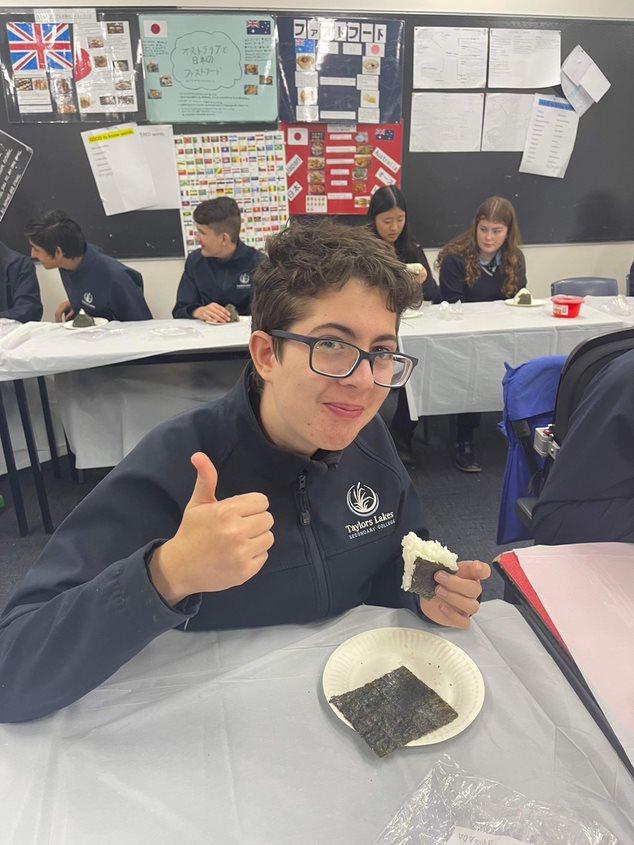
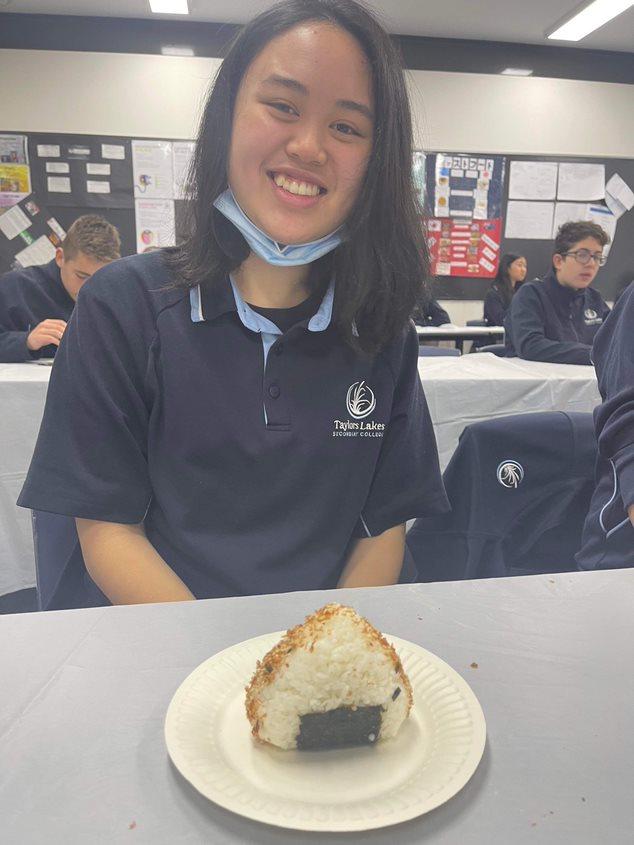
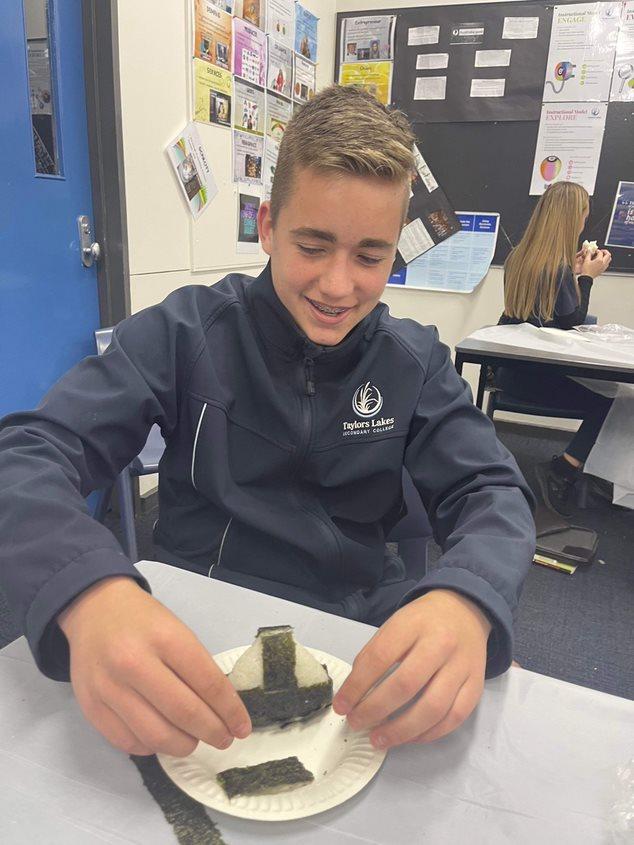





Leah Shin
Japanese Teacher
Japanese Homestay and Exchange Leader